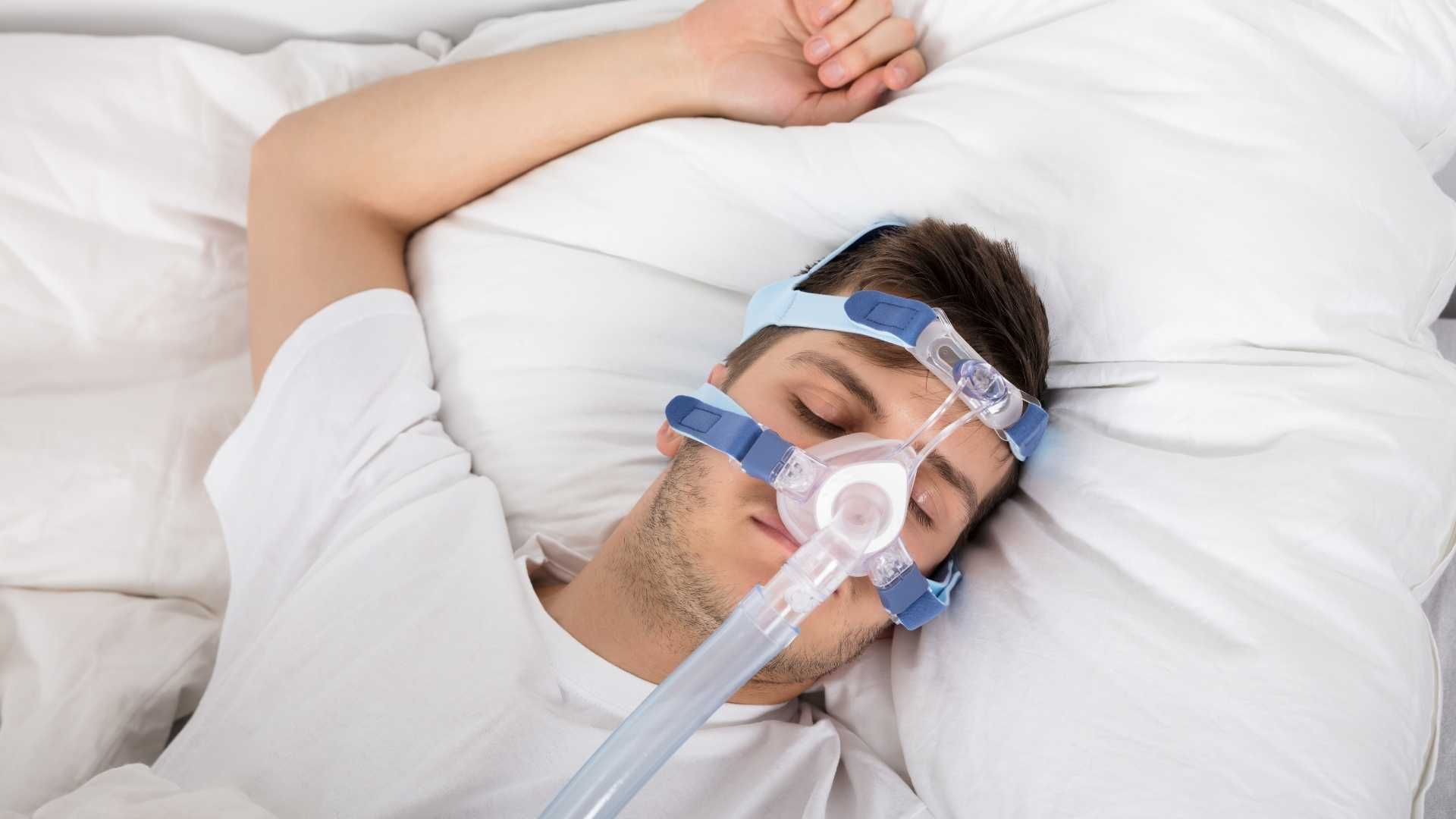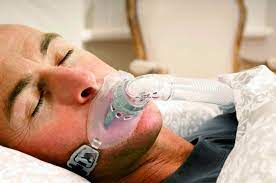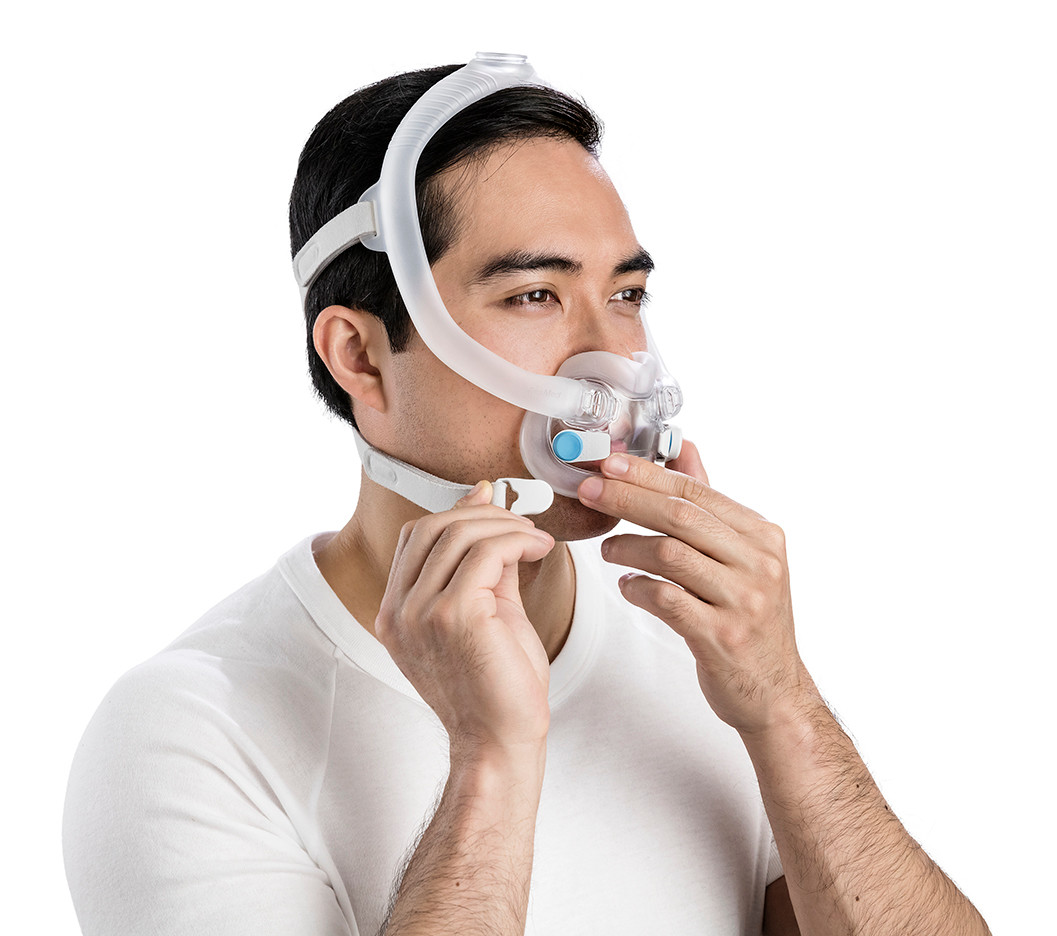.jpg)
At a Glance:
- PAP (Positive Airway Pressure) machines are medical devices that pump air through a mask to help people breathe while they sleep.
- PAP machines contain three major parts - a pump that delivers air, a mask that fits over the nose, mouth or both, and a tube that connects the two.
- There are three forms of PAP machine that are used to treat conditions such as Obstructive Sleep Apnoea, Central Sleep Apnoea or Chronic Obstructive Pulmonary Disease.
- CPAP (Constant Positive Airway Pressure) machines deliver a constant stream of pressurised air.
- APAP (Automatic Positive Airway Pressure) machines lower air pressure when breathing is normal but increase pressure when it senses a change in breathing.
- VPAP (BiPAP) Variable Positive Airway Pressure or Bi-level Positive Airway Pressure machines increase pressure during inhalation and lower pressure during exhalation.
- There are four kinds of masks that may be used - nasal pillows that attach to the nostrils, nasal masks that fit over the nose, oral masks that fit over the mouth and full face masks that cover both the nose and mouth.
What is a CPAP machine?
A CPAP (Continuous Positive Airway Pressure) machine is a device used to treat breathing problems such as sleep apnoea, chronic obstructive pulmonary disease (COPD) or chronic snoring. CPAP is the most common form of PAP (Positive Airway Pressure) treatment and is a frontline treatment for Obstructive Sleep Apnoea (OSA).Both snoring and sleep apnoea occur due to airways being obstructed or collapsing during sleep, causing the person with the condition difficulty breathing or even ceasing to breathe altogether. CPAP machines deliver a continuous stream of positive air pressure through the upper airways, helping keep them open, helping people suffering breathing problems sleep through the night.
What is an APAP machine?
Whereas CPAP machines deliver a constant stream of oxygen through the nose and mouth, an APAP (Automatic Positive Airway Pressure) machine monitors a user’s breathing throughout the night and adjusts the air pressure and airflow to compensate for changes in breathing.
APAP machines measure the resistance of each breath you take during the night and then increases or decreases pressure as required. If your breathing is normal, an APAP machine will lower the pressure, and will increase pressure when it senses a change in breathing brought on by sleep apnoea, hypopnoea or another sleep breathing condition. APAP therapy is most often prescribed for people with complex forms of sleep apnoea, such as positional apnoea (apnoea that is exacerbated by some sleeping positions), or REM-related sleep apnoea. APAP may also be recommended for people who can’t acclimate to CPAP therapy.
What is a VPAP (BiPAP) machine?
The third form of PAP therapy is referred to as VPAP (Variable Positive Airway Pressure) or BiPAP (Bi-level Positive Airway Pressure) depending on the manufacturer of the device used. VPAP differs from other PAP therapies as the machine delivers two different pressures - one for inhaling and the other for exhaling.
VPAP sits somewhere between CPAP and APAP in terms of functionality. While not automatically adjusting pressure like APAP, a VPAP machine doesn’t simply deliver a constant single pressure throughout the night like CPAP. The machines deliver one pressure for inhaling and a reduced pressure for exhaling, making it easier for people to breathe normally.
These machines aren’t typically prescribed as a first line treatment for sleep apnoea, but rather for those who can’t acclimate to CPAP therapy. BiPAP therapy may also be prescribed for people with sleep apnoea combined with another breathing condition, central sleep apnea, COPD, neuromuscular disorders and other conditions that may require ventilation.
How do PAP machines work?
All PAP machines are essentially made of three parts - the machine that provides the positive airway pressure, a mask that fits over the user’s nose, mouth or both, and a flexible hose that carries air from the machine to the mask.
There are four kinds of PAP masks - nasal pillows, nasal masks, full-face masks, and oral masks. What type of mask is recommended depends on a number of factors, including facial hair that may interfere with other forms of mask, whether you wear glasses, if you feel claustrophobic wearing a full face mask, how much you move around in your sleep and more. All masks are attached to the user with straps around the back of the head to ensure a tight fit to prevent leakage or the mask slipping during sleep.
Nasal Pillows
.jpg)
Nasal pillows, despite the name, aren’t soft cushions to rest your nose on. This form of mask fits to the nostrils and is the smallest and lightest form of PAP mask. These masks are often recommended as the first line treatment for people with sleep apnoea (if they can breathe through their nose).
Nasal pillow masks are also recommended for people who experience claustrophobia in full face masks, move around during sleep, have facial hair that may cause leakage with other masks, or people who wear glasses and like to watch TV or read before going to sleep. Nasal pillows aren’t suitable for people who require high pressure during PAP therapy
Nasal Masks

Nasal masks fit snugly over the nose to deliver positive pressure to the upper airways. Nasal masks are suitable for users who can comfortably breathe through their nose and require high pressure ventilation.
Nasal masks are suitable for all sleeping positions but are especially good for side or stomach sleepers, as the masks are small and don’t typically slip when moving around during sleep.
Oral Masks

As they are typically classified as a form of full-face mask, while some oral masks may cover both the nose and the mouth, this style of mask only delivers positive airway pressure through the mouth. This firm of mask is recommended for heavy mouth breathers who have problems breathing through their nose due to obstruction, a deviated septum, infection or illness.
It is recommended that oral masks are used in conjunction with a humidifier as people using this form of mask are prone to dryness due to a lack of nasal breathing.
Full-Face Masks

Full-face masks cover the nose and mouth and deliver positive air pressure through both. This style of mask is recommended for mouth breathers or people who switch between nasal and mouth breathing.
Full-face masks are also recommended for people who may have some difficulty breathing through their noses, such as those with sinus problems or allergies, or people who have tried nasal masks or pillows but have found themselves switching to mouth breathing in their sleep.
Using a CPAP Machine
Using a PAP machine is simple but does take some getting used to. The style of mask you have been recommended will most likely have been fitted during an appointment with a CPAP specialist or clinic, but if it wasn’t fitted or you have purchased your own lask online, it’s important that the mask is snugly fitted so there is no leakage. That said, your mask should not be too tight, as no matter how well you can breathe, if you’re uncomfortable then sleep may be difficult.
It’s recommended that when using CPAP that you don’t go to bed until you’re tired. One of the reasons for this is that the constant air pressure may be uncomfortable for some people, making it difficult to fall asleep. Some PAP machines have what is referred to as a ramp setting. This allows the machine to monitor your breathing and only ramp up air pressure when you fall asleep, minimising discomfort.
Ensuring you are following good sleep hygiene, such as having a supportive mattress and pillow keeping your bedroom quiet and dark, refraining from using your phone a few hours before bed and the like can also help you acclimate to using a CPAP machine. If you are a side sleeper, or are trying to train yourself to side sleep, there are pillows available to accommodate comfortable side sleeping while wearing a CPAP mask. For some people, PAP therapy has all but immediate effects, with users experiencing better sleep and less daytime fatigue within days of starting therapy, but for others it may take a few weeks or more for the treatment to have effect.
Possible CPAP Side Effects
All forms of PAP therapy are safe and are the best first line treatment for sleep apnoea, but even some people may experience side effects if they use their PAP machines improperly, don’t clean them adequately or don’t take advised precautions.
Possible side effects of CPAP use include:
- Aerophagia - this is a fancy way of saying swallowing air. Everyone swallows regularly, both while awake and asleep. If PAP pressure is too high, air may be forced into the stomach during nocturnal swallowing leading to bloating and gas.
- Claustrophobia - some people may experience feelings of claustrophobia if they require a full face CPAP mask. If possible, switching from a full face mask to a nasal mask or pillow may alleviate this feeling.
- Dry Nose or Mouth - having a dry or stuffy nose, or a dry mouth (depending on the style of mask being worn) is a common side effect of using a PAP machine. Users or nasal pillows or masks may also experience nosebleeds due to dry sinuses. Use of a humidifier may help alleviate dryness.
- Infection - if you don’t regularly clean your CPAP mask you may have an increased risk of lung or sinus infections.
- Lung Discomfort - some people may experience discomfort in their lungs while using a CPAP machine. This is typically due to overly dry or cold air being pumped through the mask. Use of a humidifier may help alleviate any discomfort.
- Shortness of Breath - some people may experience a feeling of shortness of breath, but unless there is some problem with lung function this is likely to be strictly sensorial, as a CPAP machine won’t reduce the amount of air being taken in with a breath.
- Skin Irritation/Sores - people may experience irritated or broken skin where the mask sits on the face. A mask needs to be tight to prevent leakage, but having it fit too tight may increase the risk of developing skin irritations. Hypoallergenic cloth or gel mask barriers that sit between the mask and face can help to achieve a tight fit with less chance of irritation.
Even if you do experience some side effects from using a PAP machine, especially early in therapy, it’s important to continue using the therapy. In many cases a user will become acclimated to using the machines fairly quickly, enabling them to get proper rest. If you do experience ongoing problems or side effects, your CPAP specialist will be able to help you find ways to alleviate them.
If you’re interested in checking whether you need to start using a PAP machine, or would like advice on sleep apnoea, COPD or other breathing problems that may affect your sleep, schedule an appointment to see ResMed , specialists in sleep apnoea and sleep ventilation. The fastest and easiest way to search for and book healthcare appointments online is through MyHealth1st.